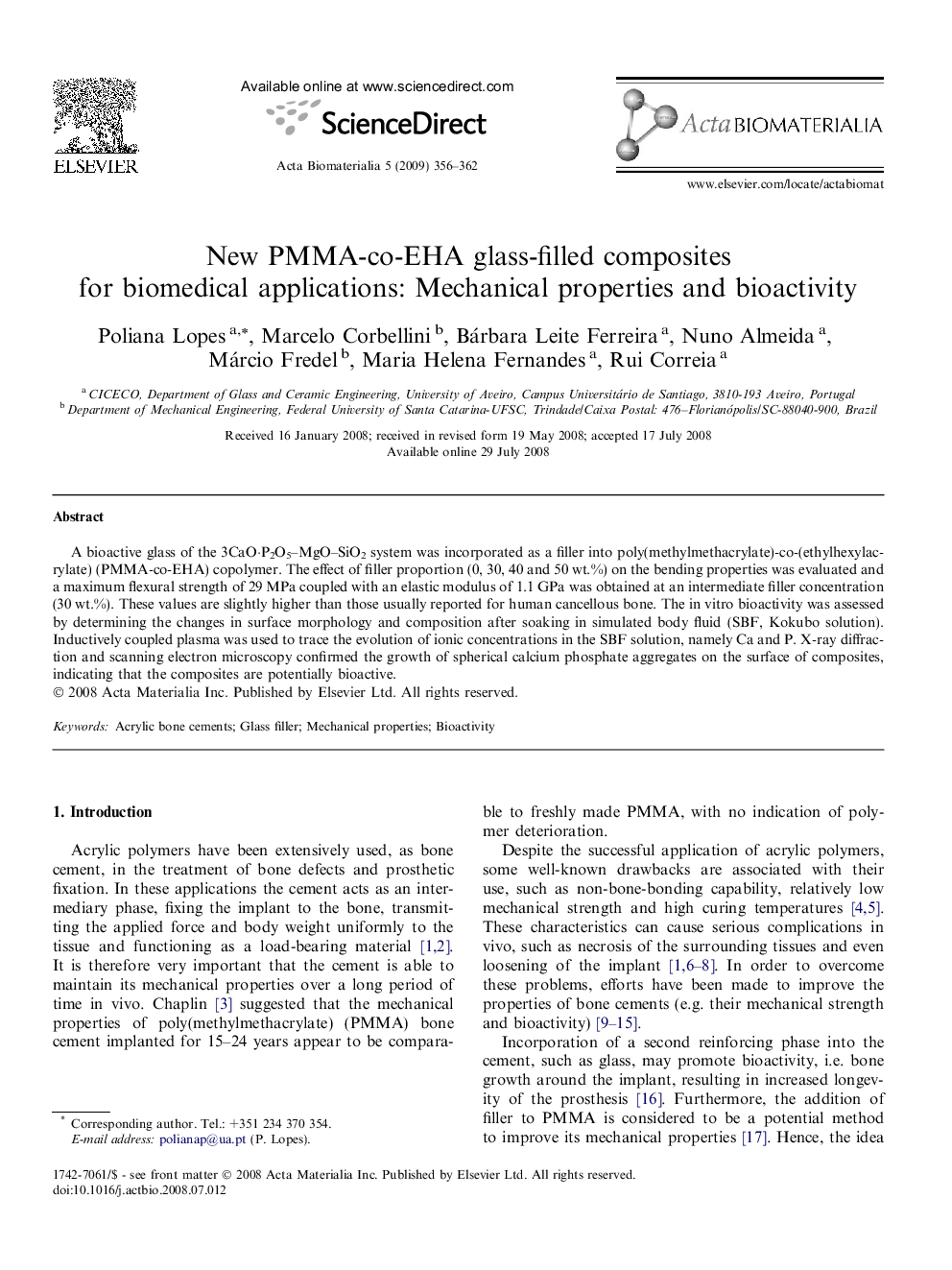| Article ID | Journal | Published Year | Pages | File Type |
|---|---|---|---|---|
| 2375 | Acta Biomaterialia | 2009 | 7 Pages |
A bioactive glass of the 3CaO·P2O5–MgO–SiO2 system was incorporated as a filler into poly(methylmethacrylate)-co-(ethylhexylacrylate) (PMMA-co-EHA) copolymer. The effect of filler proportion (0, 30, 40 and 50 wt.%) on the bending properties was evaluated and a maximum flexural strength of 29 MPa coupled with an elastic modulus of 1.1 GPa was obtained at an intermediate filler concentration (30 wt.%). These values are slightly higher than those usually reported for human cancellous bone. The in vitro bioactivity was assessed by determining the changes in surface morphology and composition after soaking in simulated body fluid (SBF, Kokubo solution). Inductively coupled plasma was used to trace the evolution of ionic concentrations in the SBF solution, namely Ca and P. X-ray diffraction and scanning electron microscopy confirmed the growth of spherical calcium phosphate aggregates on the surface of composites, indicating that the composites are potentially bioactive.
